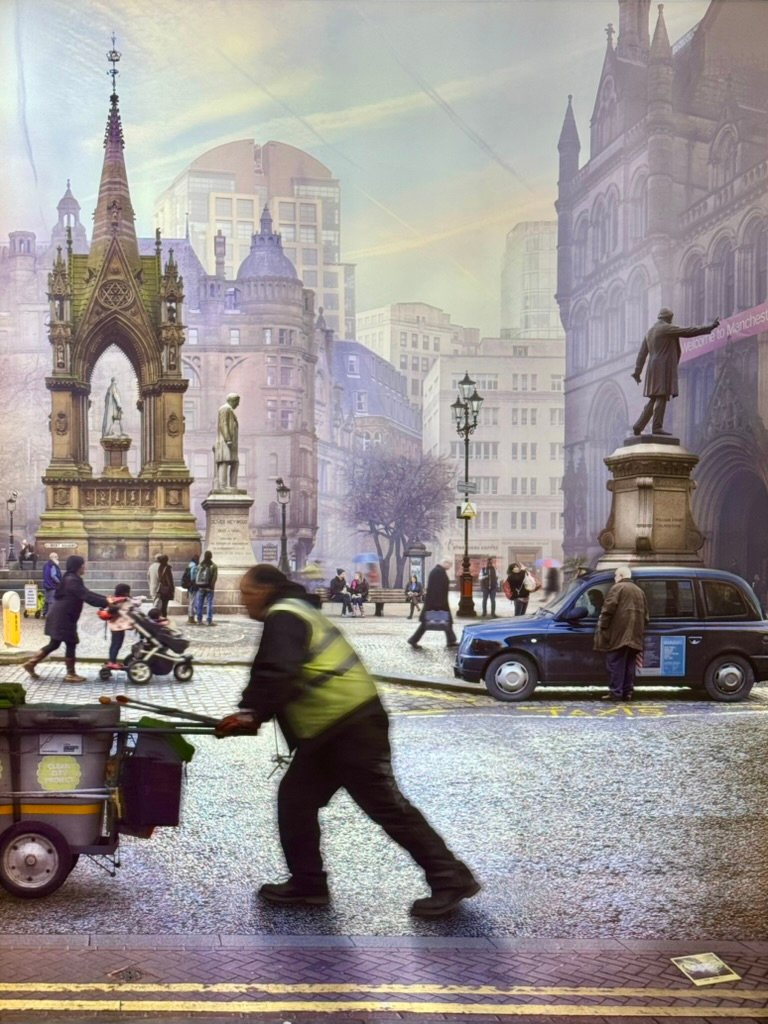Manchester Art Gallery
27/10/24 04:36 Filed in: Personal
Manchester Art Gallery is located in a building on the corner of Mosley Street and Princess Street. It opened to the public nearly 200 years ago and everything is free to view. The Gallery holds a wonderful and diverse collection of paintings, artefacts and other items. I visited it for the first time yesterday after an early morning run and before going to the Etihad for the City game.

Summer in Cumberland – James Durden – 1925
James Durden was born in Manchester and later lived in Keswick in the Lake District. This picture shows his family in their home overlooking Derwent Water. It is one of the most popular works in the gallery, and possibly my favourite too. So tranquil, and such a wonderful use of light.

When apples were golden and songs were sweet, but summer had passed away – John Melhuish Strudwick – c.1906
The gallery also has a pre-Raphaelite collection. This is an idealised portrait of two young women absorbed in their music in the autumn light. It reflects the Victorian nostalgia for an earlier rural lifestyle at a time of growing urbanisation and industrialisation.

100 Women – photographer Andrew Brooks – 2022
100 women aged over 50 were interviewed about their experiences of work in late 2001 by a research team. The team's report made a number of recommendations for changing women's lives for the better. These are summarised in a manifesto which is displayed in the gallery. The women who were interviewed came together for a celebratory dinner at the gallery in 2022 when this photograph was taken (so they must all have been over 70 by then).

Adoration of the Golden Calf – Claude Lorrain – 1660
This painting is in a section of the Gallery devoted to The Grand Tour (not the Clarkson version, but the cultural European travelling experience undertaken mainly by young aristocratic English men in the 18th century). Claude Lorrain was a leading classical landscape painter. This Biblical scene is taken from the Book of Exodus. Moses goes up Mount Sinai to receive the Ten Commandments. In his absence the Israelites go astray and worship an idol.

No War but Class War - M60 – Jen Orpin – 2023
And now for something completely different. An example of motorway protest art which reaches millions of people. The slogan is an act of defiance uniting both pacifism and the struggle against societal inequality.

Albert Square, Manchester (after Vallette) – Emily Allchurch – 2015
This was inspired by the gallery's painting of Albert Square in 1910 by the French Impressionist Adolphe Vallette. Emily Allchurch took many photographs of Albert Square and created a digital collage recalling Vallette's cityscape. So the transitional early 20th century city is reimagined 100 years later. I also saw the Vallette painting. Without doing it down, I prefer the modern version as it really brings this part of the city to life.

A Man with a Dog in a Landscape – Abraham Blomaert – c.1632
Another idyllic vision of country life, in a room dedicated to Art in the Netherlands 1600-1800. I think you would know this was a Dutch scene even without being told. It made me think of my aunt-in-law, a lovely woman who has lived in the Netherlands for very many years.

Couture Codes: History and Narrative – Alexander McQueen
Black silk evening tunic, beaded, Autumn/Winter 1998
As stated on its website, the gallery exhibition Unpicking Couture premieres spectacular high-end fashion which has recently entered its collection. Created by influential designers and fashion houses, each outfit represents a groundbreaking moment in fashion. In this striking dress, McQueen used a photographic portrait of three unknown German children from a daguerreotype made in 1845. He reattributed the sitters to three young Romanov princesses who were murdered by the Bolsheviks in 1918.
I want this dress. It's not for sale, so I'm going to have to steal it from the gallery when no one's looking.